Path of Exile is coming to Xbox One! Here's what you need to know.
Path of Exile is coming to Xbox One ... but what exactly is it?
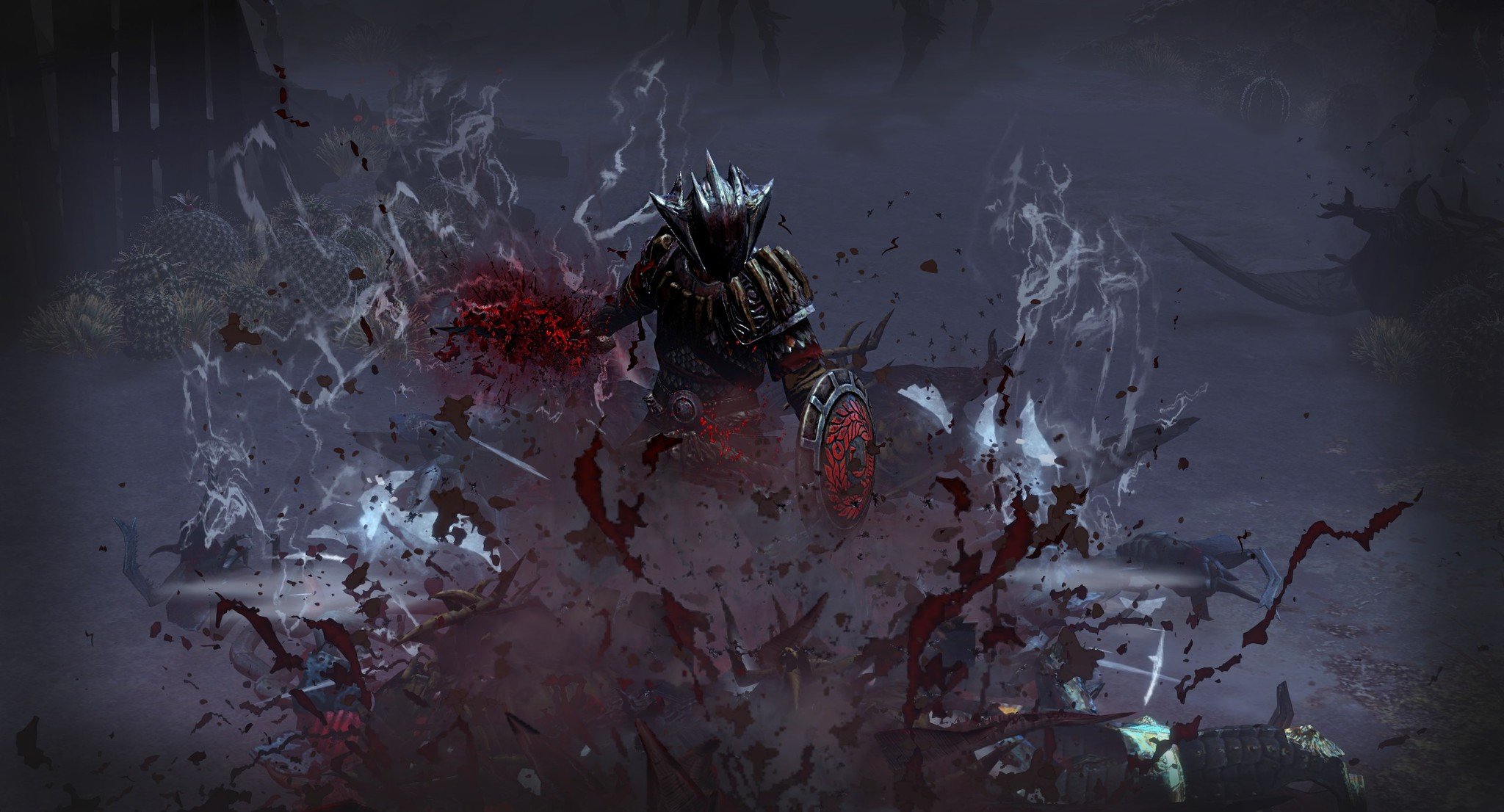
Path of Exile is best described as a Diablo-like isometric RPG, but the similarities are superficial. It's already available for PC, and it's hugely popular there. In reality, Path of Exile offers players far more freedom to customize their characters and skills, and it's set in a large online world brimming with quests, loot, and gothic, eldritch horrors. Oh, and it's free — but not in the pay-to-win sense of the word. Path of Exile is funded 100 percent by purely cosmetic, non-gameplay-affecting DLC. It's a rare gem indeed.
We went hands-on with the Xbox One version of Path of Exile at GDC 2017. Here's what Xbox players can expect.
Developed by Grinding Gear Games, Path of Exile seemed to appear out of nowhere in 2013. The game launched against a backdrop of criticism for Diablo III's real-money auction house, and its apparent shift in tone to something a little brighter. Blizzard itself parodied the "uproar," with a hidden level filled with ponies and rainbows.
Either way, Path of Exile felt like it came around at the right time. The game is uncompromisingly dark and brutal, set in a macabre world teeming with all manner of demonic entities and twisted beasts. Path of Exile also sports (optional) competitive player-versus-player combat, a persistent online world, and some of the deepest character customization the genre has seen.
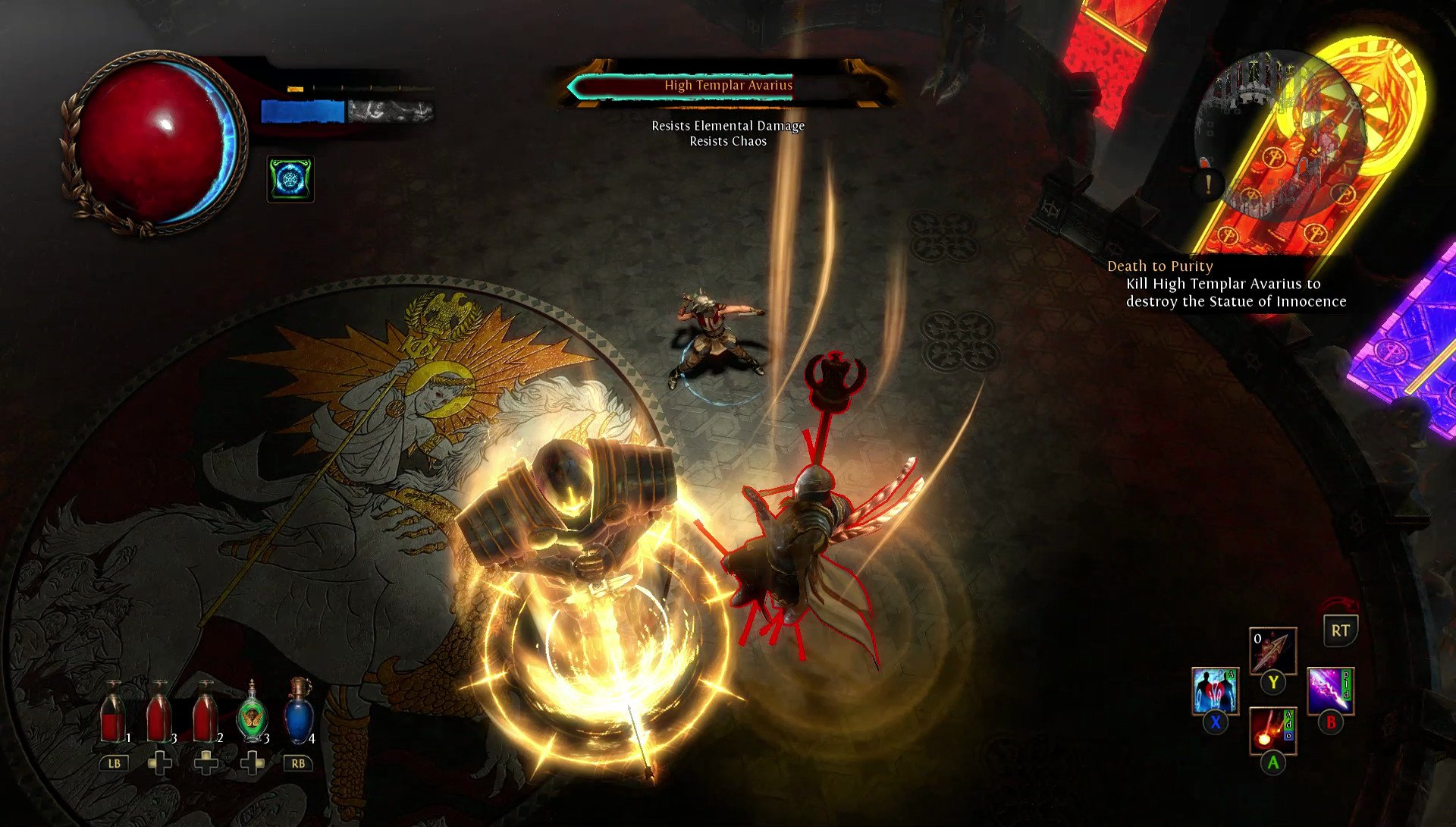
Customization
Path of Exile's skill gem system is perhaps most easily compared to Final Fantasy 7's "Materia." Unlike other action RPGs, you can pick and choose from literally any of the hundreds of skills in Path of Exile, as abilities come in the form of colored gems. Say, for instance, you socket a fire skill into your gear; you can then customize that fire skill multiple times over, choosing up to five modifying support gems. Perhaps you want your fire spell to deal damage in a cone, split into multiple projectiles or chain from enemy to enemy — all of those combinations are available, and much more, powering an utterly bewildering assortment of character options.
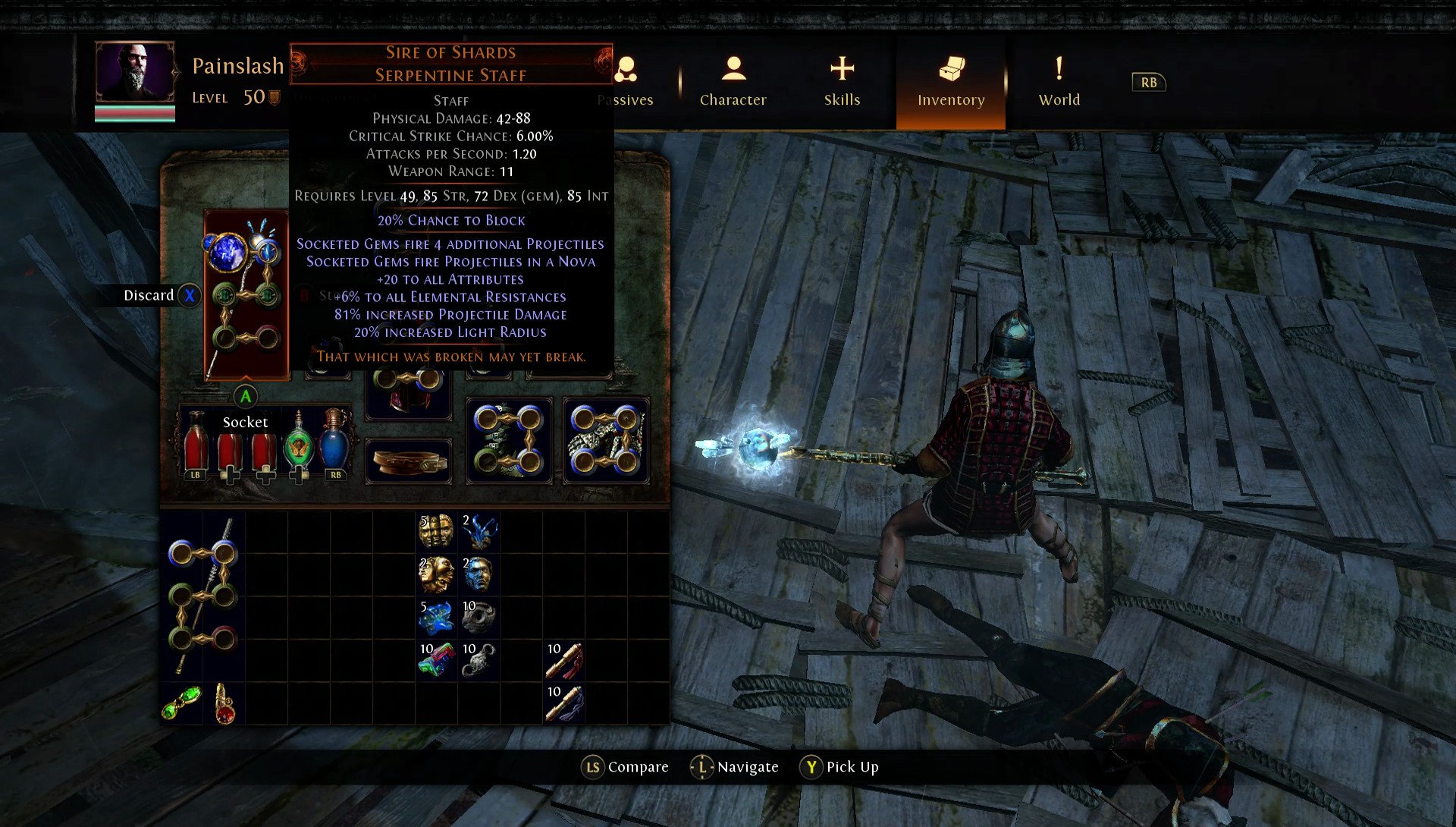
Beyond active skills, you can build your character in a more permanent way using Path of Exile's gargantuan skill tree. Once again, this system appears to have, at least in part, been inspired by Final Fantasy, notably FFX's Sphere Grid.
When you craft a new character, you can choose from one of six archetypes: Duelist, Shadow, Marauder, Witch, Ranger, and a Templar. Each of these has further Ascendency classes which allow you to customize even further, and you can unlock a Scion class eventually, as well.
Get the Windows Central Newsletter
All the latest news, reviews, and guides for Windows and Xbox diehards.
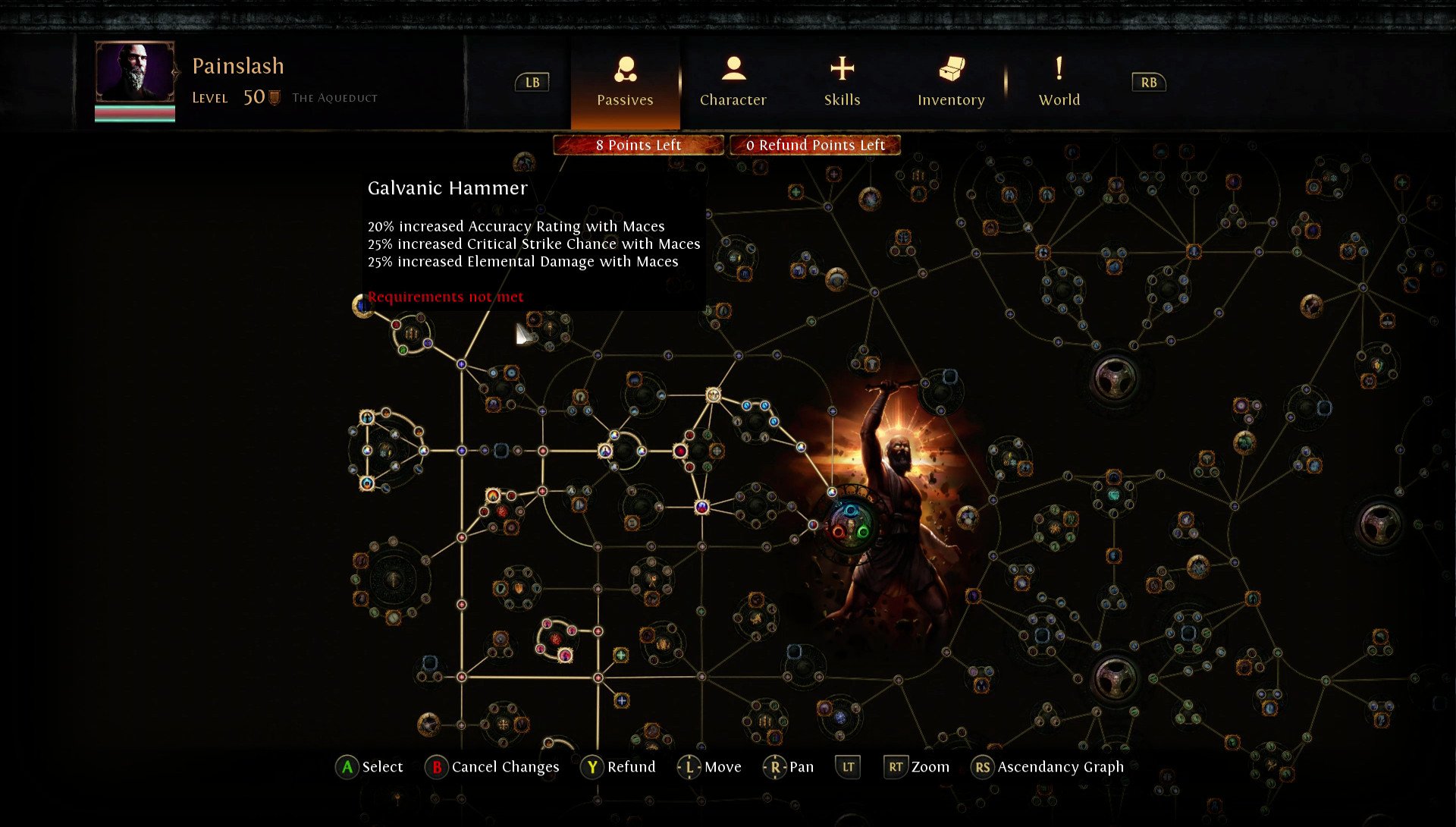
Depending on your class choice, you will start at a preordained position on the Path of Exile skill tree, which contains a certifiably-insane 1,325 passive upgrades. Every level up and certain quests grant an extra point to spend in the passive tree, which allows you to customize your playstyle. Naturally, you won't get enough points to buy every skill, so focusing on specifics is best. Imagine a Necromancer who also wields lightning, or a Witch who focuses on fast-casting fire spells.
In addition to mundane passives such as increased magic damage, there are also more notable Keystone skills that grant benefits in exchange for tradeoffs. Necromantic Aegis, for example, grants your shield properties to your undead army, rather than yourself. If you want to check out Path of Exile's skill tree, it's available online.
Loot and economy
As an always-online game, Path of Exile has a powerful in-game economy, which encourages players to scavenge and trade powerful items.
Since Path of Exile's skills are also items, rare abilities might be worth more to trade than actually equip, particularly if they don't match your playstyle. The same goes for weapons, armor, and other gear that you will find in abundance throughout Path of Exile's sizeable world.
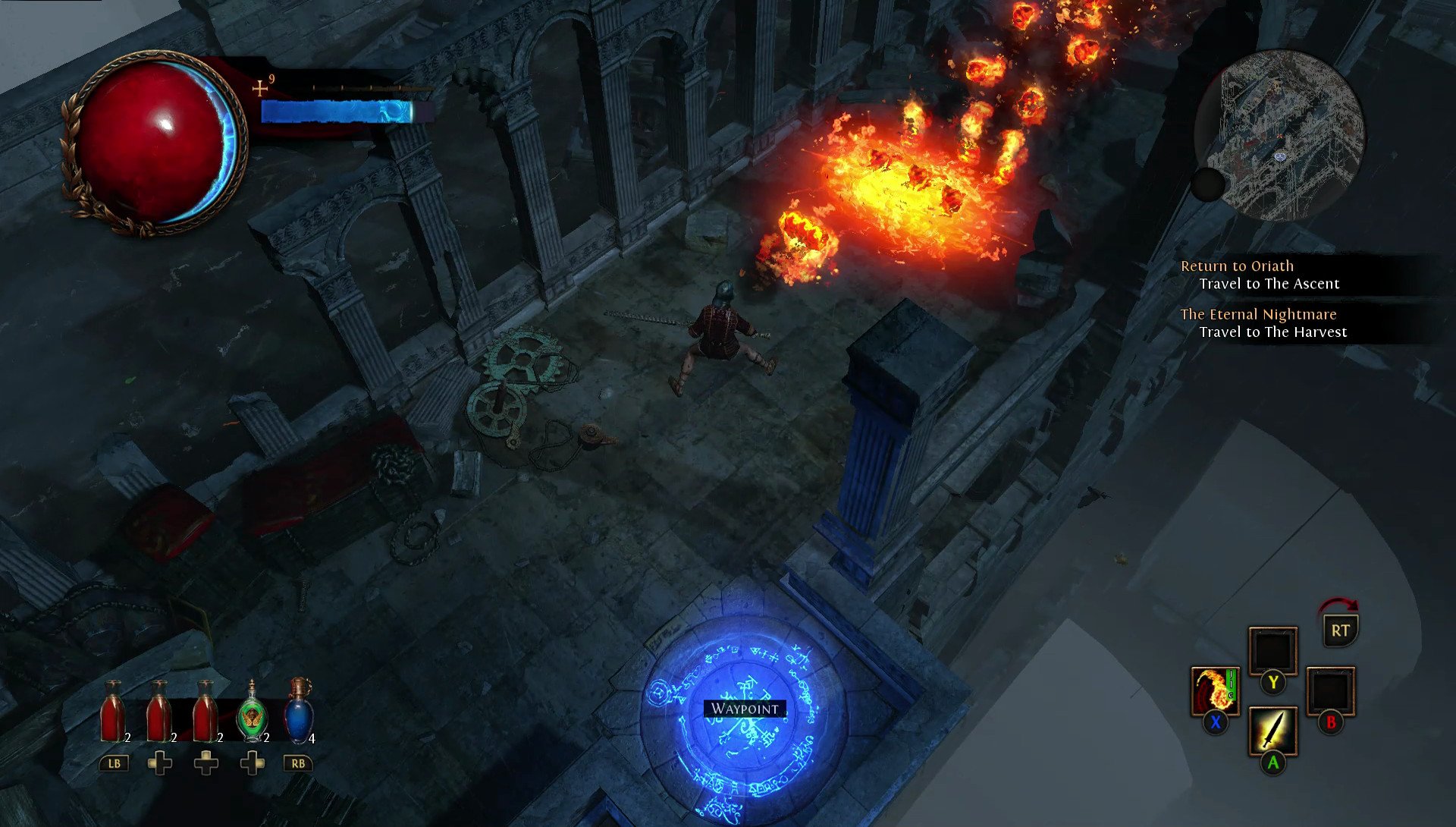
Unlike most RPGs of this type, Path of Exile doesn't have a traditional "gold"-based economy. Instead, players barter consumable items. As a result, Path of Exile has no artificial money sinks and isn't plagued by real money traders (RMT) whose sole goal is to disrupt the economy by harvesting and selling in-game currency online. Path of Exile may allow you to upgrade items, identify mysterious artifacts, or grant access to an end-game area. Grinding Gear Games says some items are so rare that you might only read about them on forums.
Gameplay and world
Path of Exile is set on the continent of Wraeclast, which Grinding Gear Games describes as a "dark, brutal" place. Path of Exile hopes to rekindle the magic of gloomy, realistic fantasy RPGs, ditching what is described as the "trend towards bright, cartoony RPGs." Expect corrupt, demonic dungeons, haunted mines, Lovecraftian undersea caves, and abandoned castles, full of nasties hungry for (your) blood.
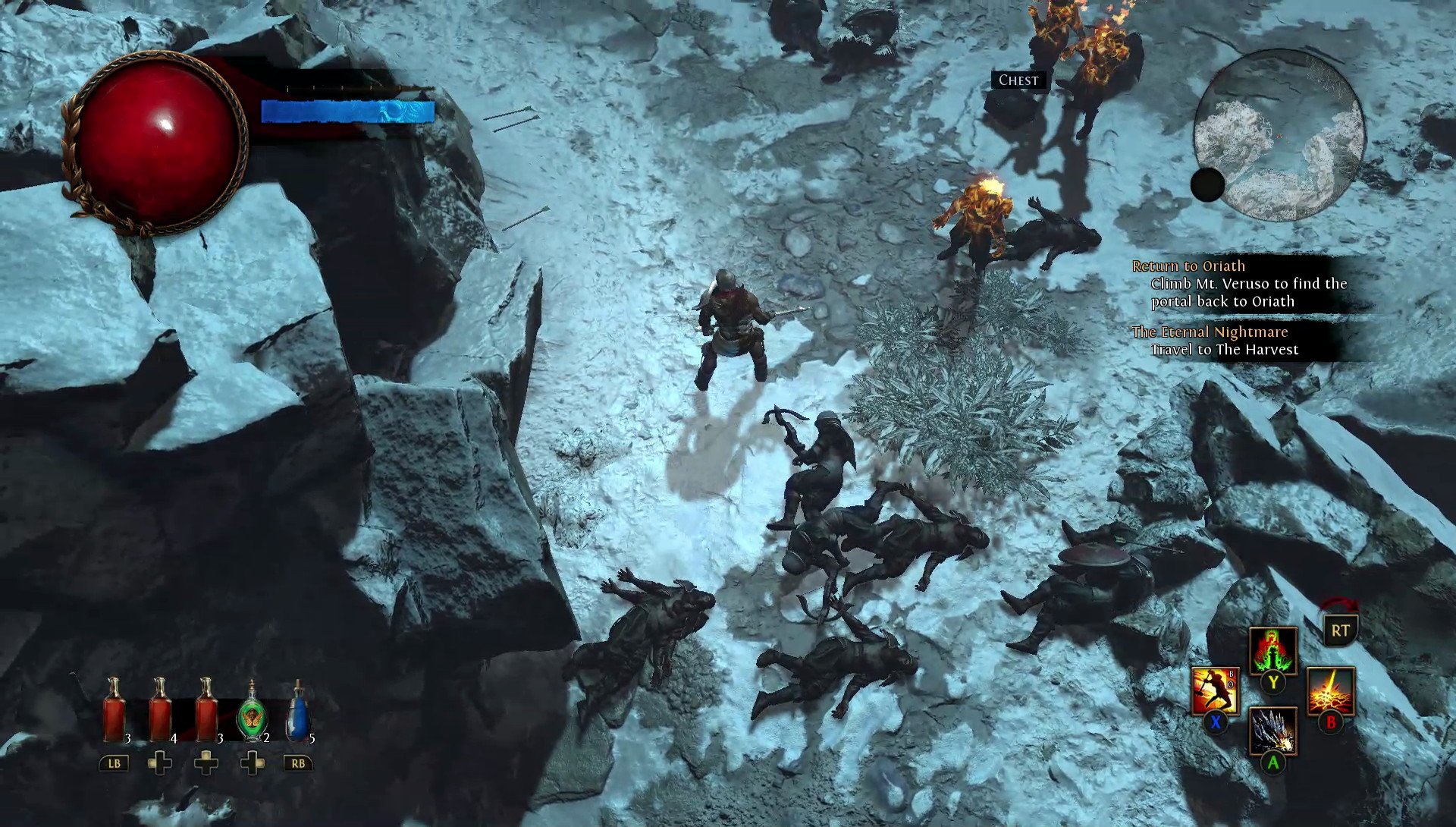
Superficially, Path of Exile plays similarly to Diablo, with the key difference that you will encounter other players passively while you explore its world, although PvP play is separate. Path of Exile is a permanently connected game, but you will not need an Xbox Live Gold subscription to play it solo. As you might expect, you can also squad up and explore Wraeclast too, building characters to complement each other's skills and abilities.
Replayability is a key aspect of the game, where both items and areas are procedurally generated. End game content offers infinite new ways to play, with competitive leagues, a constant cycle of new expansions and other updates, funded by what Grinding Gear calls "ethical microtransactions," that provide only cosmetic bonuses (take note, devs.)
Path of Exile could keep you busy for a long, long time.
When will Path of Exile be available?
Path of Exile is slated for a 2017 launch, more specifically towards the end of the year. Naturally, the control schemes had to be reworked for consoles, including the Xbox Live API for achievements and partying up. Xbox One players will get their own servers, separate from the PC version.
Moving forward, Grinding Gear Games is aiming to synchronize updates and free expansions between PC and Xbox One. The Xbox One version of the game will launch with all previous content and updates, including the various under-the-hood fixes and graphical improvements the game has received since its launch.
Path of Exile's business model allows it to be perpetually updated, and Grinding Gear Games has found a ton of success with its efforts so far. Hopefully, bringing it to Xbox One will bring expose the game to an entirely new audience, to help it grow even further.
The notion that a game could actually be free to play but remain balanced for those who don't want to pony up the cash is pretty rare. With more and more developers putting gameplay-affecting micropayments in their games, it's nice to see others take a stand against the practice.
We'll be on task to let you know how Path of Exile is growing in the coming months ahead, so keep it locked to Windows Central for all the latest information.

Jez Corden is the Executive Editor at Windows Central, focusing primarily on all things Xbox and gaming. Jez is known for breaking exclusive news and analysis as relates to the Microsoft ecosystem while being powered by tea. Follow on Twitter (X) and Threads, and listen to his XB2 Podcast, all about, you guessed it, Xbox!
